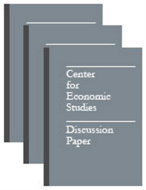
An official website of the United States government
Here’s how you know
Official websites use .gov
A .gov website belongs to an official government organization in the United States.
Secure .gov websites use HTTPS
A lock (
) or https:// means you’ve safely connected to the .gov website. Share sensitive information only on official, secure websites.
-
//
- Census.gov /
- Library /
- Census Working Papers /
- Are We Undercounting Reallocation’s Contribution to Growth?
Are We Undercounting Reallocation’s Contribution to Growth?
Are We Undercounting Reallocation’s Contribution to Growth?
Abstract
There has been a strong surge in aggregate productivity growth in India since 1990, following significant economic reforms. Three recent studies have used two distinct methodologies to decompose the sources of growth, and all conclude that it has been driven by within-plant increases in technical efficiency and not between-plant reallocation of inputs. Given the nature of the reforms, where many barriers to input reallocation were removed, this finding has surprised researchers and been dubbed “India’s Mysterious Manufacturing Miracle.” In this paper, we show that the methodologies used may artificially understate the extent of reallocation. One approach, using growth in value added, counts all reallocation growth arising from the movement of intermediate inputs as technical efficiency growth. The second approach, using the Olley-Pakes decomposition, uses estimates of plant-level total factor productivity (TFP) as a proxy for the marginal product of inputs. However, in equilibrium, TFP and the marginal product of inputs are unrelated. Using microdata on manufacturing from five countries – India, the U.S., Chile, Colombia, and Slovenia – we show that both approaches significantly understate the true role of reallocation in economic growth. In particular, reallocation of materials is responsible for over half of aggregate Indian manufacturing productivity growth since 2000, substantially larger than either the contribution of primary inputs or the change in the covariance of productivity and size.
Others in Series
Working Paper
Working Paper
Working Paper
Share
Related Information
Some content on this site is available in several different electronic formats. Some of the files may require a plug-in or additional software to view.
 Yes
Yes
 No
NoComments or suggestions?


Top

